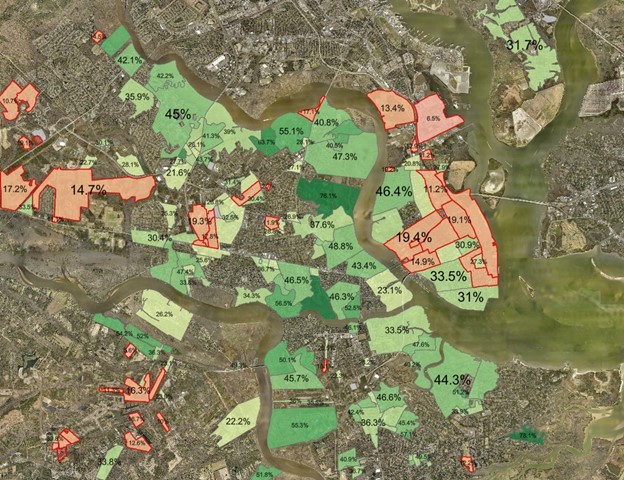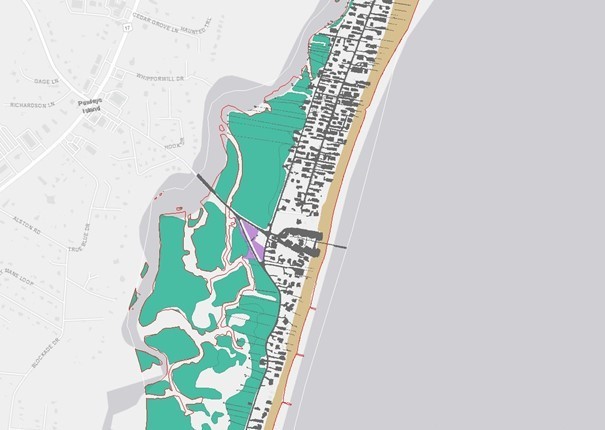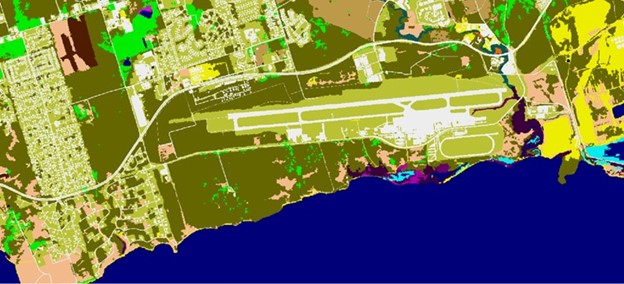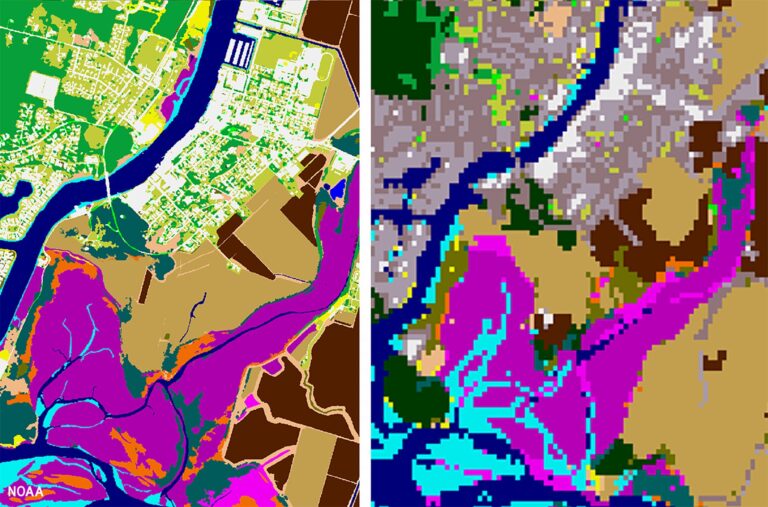NOAA has released high-resolution land cover data through its Digital Coast data product. The high-resolution version of this data product moves from 30m resolution to 1m – 900 times more detailed than the previous generation of land cover maps. The coverage expanded too, as all of the coastal and Great Lakes states are mapped, as well as the territories, and, for the first time, Alaska.
According to the organization, this data provides communities with the foundational data needed to assess coastal resources, analyze land use, prepare for disaster risks and adapt to a changing climate. By comparing one year to another, people also use the information to document how the landscape has changed over time.
This higher level of resolution means new data users, as the new data product can be used on a site or local level. For example, it can be used for flood inundation modeling and risk assessment because high-resolution land cover data helps modelers more accurately simulate how water will flow across the landscape, find areas that are flood-prone, and identify at-risk features, including buildings, roads and bridges.
It can improve storm surge modeling because land cover data is a key input for the National Weather Service’s “SLOSH” model, which estimates storm surge heights. The higher the resolution of the input data, the more accurate the model, which is particularly important in smaller island geographies. Puerto Rico and the US Virgin Islands, for instance, are expected to benefit greatly from the inclusion of high-resolution data.

NOAA also expects the tool to better identify flood risks to transportation infrastructure. In Texas, high-resolution land cover data was integrated with flood modeling layers. This effort made it possible to analyze bridges under a variety of flood scenarios, and several were identified as potentially at risk from future flooding scenarios.
The improved Digital Coast is also projected to lower community flood insurance costs. The Town of Pawleys Island, South Carolina, used high-resolution land cover data to map open space in the floodplain and calculate the amount of credits the community could earn through the open space preservation activity in FEMA’s Community Rating System program. That work helped the town advance to the next level in the program, which gave home and business owners in the community a 25% discount on flood insurance premiums.
Alongside this, high-resolution land cover data can be used to identify areas within urban areas that are particularly hot, such as asphalt parking lots, buildings with dark roofs or facades and areas with sparse vegetation. The data can also be used to identify areas that have tree canopy, and areas where tree planting could help mitigate heat impacts.
 For example, as part of a NOAA heat study grant, Charleston, South Carolina, officials used the high-resolution data to determine which subdivisions were experiencing unusually high impacts from heat. They then analyzed areas available for tree plantings in public housing properties. These trees will help mitigate heat risk and improve the green space within these neighborhoods.
For example, as part of a NOAA heat study grant, Charleston, South Carolina, officials used the high-resolution data to determine which subdivisions were experiencing unusually high impacts from heat. They then analyzed areas available for tree plantings in public housing properties. These trees will help mitigate heat risk and improve the green space within these neighborhoods.
Finally, the tool is expected to promote access to equitable water use. California’s urban residential landscape was mapped and the data was combined with a software system that enables water suppliers to identify and target inefficient water users. This information is supporting state enforcement of water-efficiency laws, aiding local drought resilience and drought planning, and documenting agricultural water-use efficiency.
For more key data updates from the meteorological technology industry, click here.




